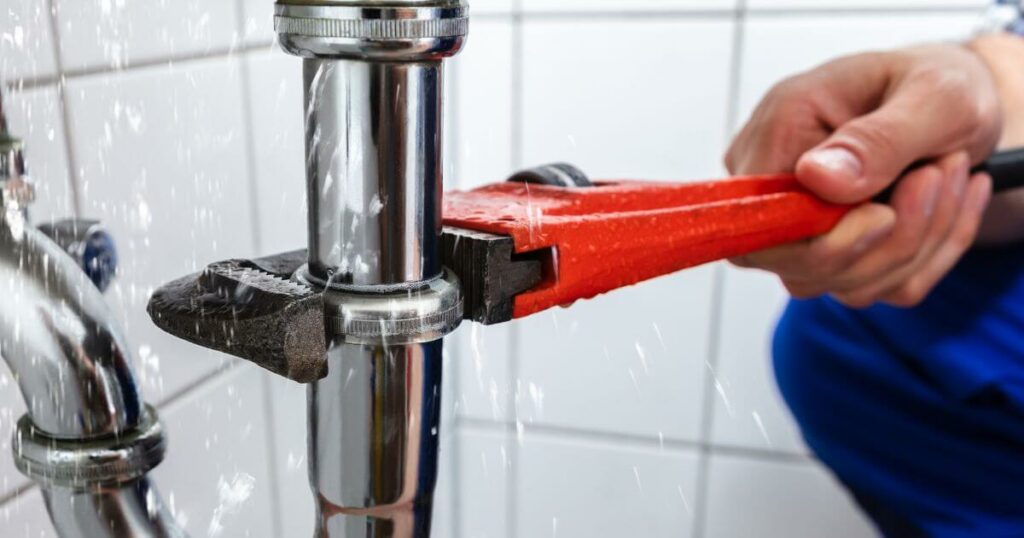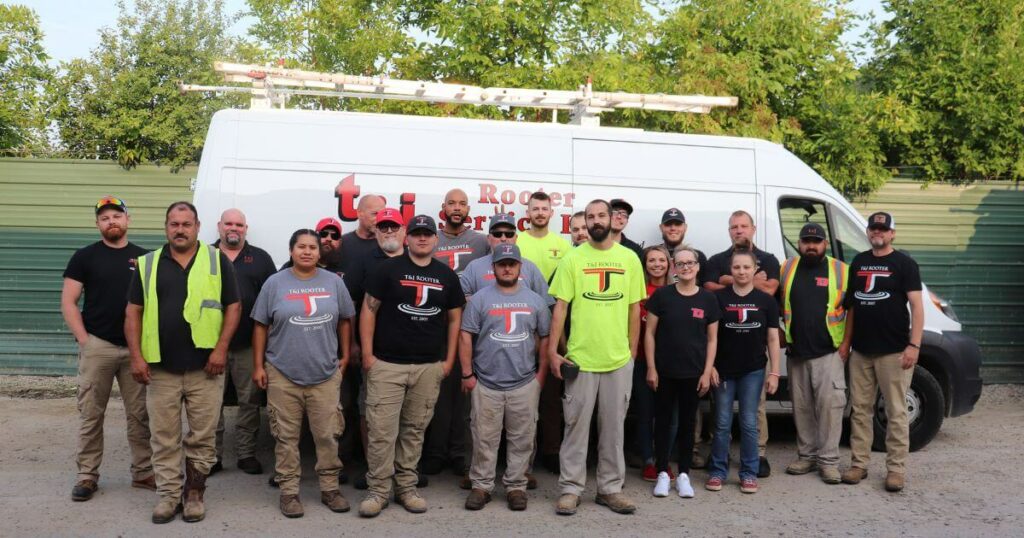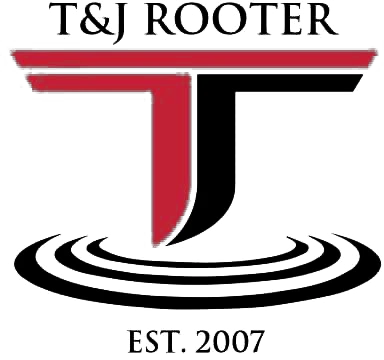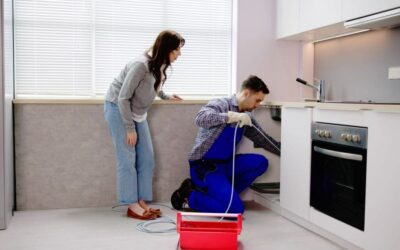A burst pipe can be a homeowner’s worst nightmare, causing significant damage to your property and belongings in a matter of minutes. Knowing what to do when a pipe bursts and how to prevent future occurrences is crucial for minimizing the impact on your home and wallet. In this comprehensive guide, we’ll walk you through the steps to take when a pipe burst in your home, how to clean up the resulting water damage, and the preventive measures you can implement to avoid this plumbing emergency. Remember to call an emergency plumber in Toledo, such as T&J Rooter Service if you are experiencing burst pipes!
Signs of a Busted Water Pipe
Before a pipe bursts, there are often warning signs that indicate a problem. Recognizing these symptoms can help you take action quickly and minimize the damage. Watch out for the following:
- Fluctuating water pressure: If you notice that your water pressure is inconsistent or lower than usual, it could be a sign of a leak or a blockage in your pipes.
- Discolored or smelly water: Rusty, discolored water with a strange odor can indicate corrosion in your pipes, which weakens the metal and makes them more prone to bursting.
- Unusual noises: If you hear clanging, banging, or whistling sounds coming from your pipes, it could be a sign of a loose or damaged pipe that’s at risk of bursting.
- Unexplained increase in water bills: A sudden spike in your water bill without a corresponding increase in usage could indicate a hidden leak that’s wasting water and putting stress on your pipes.
- Puddles under sinks or appliances: If you notice puddles of water forming under your sinks, dishwasher, or washing machine, it could be a sign of a leaking pipe that needs immediate attention.
If you notice any of these signs, it’s essential to take action quickly to prevent a pipe from bursting and causing extensive damage to your home.
First Steps to Take When a Pipe Bursts
Shut off the Water and Drain the Faucets
The moment you discover a burst pipe, your first priority should be to shut off the main water supply to your home. The sooner you can turn off your water, the less water will escape and cause damage. Locate your main water shut-off valve, which is typically found near your water heater, in a crawl space, or in your basement.
Once the water is off, open all the faucets in your home to drain the remaining water from the pipes. This will relieve pressure in the system and help prevent additional pipes from freezing or bursting. Don’t forget to flush all the toilets, too.
If there’s a chance that the leaking water has come into contact with electrical outlets or your fuse box, it’s crucial to shut off the electricity to those areas as well. Water and electricity are a dangerous combination, so err on the side of caution.
Locate the Burst Pipe
Your next step is to find the source of the leak. If the pipe has been leaking for a while, be cautious when entering the affected room, as there may be signs of structural damage, such as bulging ceilings or walls. If you catch the leak early, place a bucket under the damaged pipe to collect the dripping water and prevent further damage to your flooring or belongings.

Call In Professional Help
As soon as you’ve shut off the water and located the burst pipe, it’s time to call in the professionals. The professionals at T&J Rooter Service will be able to assess the damage, repair or replace the broken pipe, and ensure that your plumbing system is back in working order. If the leaking water has damaged your electrical system, you’ll also need to contact a qualified electrician to address any issues and ensure your home’s safety.
The actual cost will depend on factors such as the location of the damage, the extent of the repairs needed, and whether you require emergency after-hours service.
Document Damage and Contact your Insurance Company
If the damage from the burst pipe is significant, it’s essential to document everything for your insurance claim. Start taking photos of the affected areas immediately and continue to do so throughout the cleanup and repair process. Insurance companies recommend taking close-up photos of all the damaged items, along with water lines and water-damaged areas. Use a measuring tape to show the height of the standing water and take photos from different angles to provide a comprehensive view of the damage.
It’s crucial to contact your insurance as soon as possible to file your claim, as most policies have a limited window for reporting water damage. If you’re unsure about what your homeowners’ insurance covers, consider consulting with a public adjuster who can review your policy and help you navigate the claims process.
Start Cleaning Up Water Damaged Area
Once you’ve documented the damage and contacted the necessary professionals, it’s time to begin the cleanup process. The longer water sits, the greater the risk of mold growth and long-term damage to your home and belongings. If the water damage is extensive, consider renting a dumpster to simplify the cleanup and disposal of ruined items.

How to Clean Up After a Water Leak
Salvage Important Belongings
If you have standing water in any room, your first priority should be to unplug all electronics and remove them from the affected area. Next, focus on recovering your most valuable and difficult-to-replace items, such as:
- Important documents
- Family keepsakes and photographs
- Computers and electronic devices
- Expensive furniture or appliances
Expert Cleanup Tips
- Wipe down all salvaged items with a plant-based antimicrobial solution, move them to a dry location, and set up fans to aid in the drying process.
- Keep all damaged items until your insurance adjuster has assessed them, so they can verify the quality and value of the items for your claim.
- If you’ve been away from home for more than 72 hours with a water leak, mold has likely spread, and all affected items should be considered contaminated and disposed of properly.
Dry Any Wet Areas
Remove as much as possible from the water-damaged rooms, including saturated carpets, rugs, and furniture. If the standing water is shallow and you’ve confirmed that the electricity is off, you can use old towels, mops, and buckets to soak up the water. For more significant flooding, you’ll need a submersible pump or a wet/dry vacuum to remove the water efficiently. These tools can be rented or purchased from your local hardware store or home improvement center.
Once the standing water has been removed, open windows (if weather permits) and set up fans and dehumidifiers to speed up the drying process. Avoid turning on your air conditioning system to dry out the space, as this can spread mold spores and other contaminants throughout your home’s ductwork.
Toss Ruined Items
After the initial cleanup and repairs are complete, and you’ve gathered all the necessary documentation for your insurance claim, it’s time to dispose of any items that have been ruined or are at risk of developing mold. This may include:
- Carpeting, rugs, and drywall that have been submerged in water
- Fabric items or upholstered furniture that haven’t been properly cleaned and dried within 48 hours
- Electronics that have been submerged and are no longer functioning
If you’re unsure about the safety of an item, consult with a professional to ensure you’re not keeping anything that could pose a health risk. When disposing of a large number of damaged items, renting a dumpster can make the process more manageable and efficient.
Disinfect and Prevent Mold Growth
Any surface or item that has come into contact with the water from the burst pipe must be thoroughly dried, cleaned, and disinfected to prevent the growth of mold and bacteria. Depending on the extent of the water damage, you may want to consider hiring a professional mold remediation and restoration company. These experts have the tools and knowledge to detect hidden moisture, ensure your home is completely dry, and treat any areas at risk of mold and mildew.
How to Prevent Pipes From Freezing
Common Causes for Busted Water Pipes
While there are several reasons why pipes can burst, some of the most common causes include:
- Frozen Pipes: Exposure to cold temperatures without proper insulation can cause pipes to freeze and expand, leading to cracks or pipe to bursts.
- Water hammer: The movement of unsecured pipes can weaken joints over time, making them more susceptible to damage.
- High or fluctuating water pressure: Excessive water pressure puts stress on pipes and increases the risk of leaks and bursts.
- Corrosion: Rust and mineral buildup can weaken pipe walls, making them more prone to leaks and bursts.
Prevention Tips
Taking steps to prevent frozen pipes and other damage can help you avoid the stress and expense of dealing with a burst pipe. Some effective prevention tips include:
- Disconnect and drain outdoor hoses before the cold weather sets in.
- Insulate pipes in unheated areas of your home, such as the attic, basement, and crawl spaces.
- Wrap pipes in foam insulation tubes, which can be easily installed as a DIY project.
- Maintain a consistent temperature in your home, and never let it drop below 55°F (13°C), even when you’re away.
- Allow a trickle of cold water to drip from your faucets during extreme cold snaps to keep water moving through the pipe system.
If you suspect a pipe has frozen, but hasn’t yet burst, you can try thawing it using a hair dryer or space heater. Work slowly and carefully to avoid causing any additional damage.
Plan Ahead to Protect the Rest of Your Home
After repairing a burst water pipe and cleaning up the resulting water damage, you may be inspired to take additional steps to protect your home from future plumbing emergencies. Some proactive measures you can take include:
- Installing a water leak detection system that alerts you to potential problems before they cause significant damage.
- Upgrading your plumbing system to more durable, corrosion-resistant materials, such as PEX or copper pipes.
- Regularly inspecting your pipes for signs of wear, corrosion, or leaks, and addressing any issues promptly.
- Learning how to shut off your home’s main water supply and teaching family members to do the same in case of an emergency.
By being proactive and vigilant, you can minimize the risk of a burst pipe and the resulting water damage to your home and belongings.
Frequently Asked Questions
1. How much does it cost to repair a burst pipe?
The cost to repair the pipe can vary depending on the location of the damage and where the plumber can find a burst in the lines, the extent of the repairs needed, and whether you require emergency service.
2. Does homeowners insurance cover burst pipes?
In most cases, homeowners insurance policies will cover water damage, such as that caused by a burst pipe. However, it’s essential to review your specific policy and consult with your insurance provider to understand your coverage and any exclusions that may apply.
3. How long does it take to fix a burst pipe?
The time required to fix pipe bursts in your house depends on the complexity of the repair and the accessibility of the damaged pipe. In some cases, a professional plumber may be able to complete the repair within a few hours. However, more extensive damage or hard-to-reach pipes may require several days of work.
4. Can I fix a burst pipe myself?
While it may be tempting to attempt a DIY repair on a burst or broken pipe, it’s generally best to leave this work to a professional plumber. Improper repairs can lead to further damage, leaks, and even more costly issues down the road. A licensed plumber has the expertise, tools, and knowledge to ensure the repair is done correctly and safely.
5. How do I know if my pipes are at risk of freezing?
Pipes that are most at risk of freezing are those located in unheated areas of your home, such as the attic, basement, crawl spaces, and exterior walls. If you live in an area with cold winters and your home lacks proper insulation in these areas, your pipes may be vulnerable to freezing and bursting. Keeping an eye out for signs of low water pressure, strange noises, or visible frost on your pipes can help you identify potential problems before they lead to a burst pipe.

Allow T&J Rooter Service to Repair Burst Water Pipe in your Home
Dealing with a burst pipe can be a stressful and overwhelming experience, but by taking swift action and following the proper steps, you can minimize the damage to your home and belongings. Remember to shut off your water supply, call in professional help, document the damage for insurance purposes, and begin the cleanup process as soon as possible.
To prevent future plumbing emergencies, take proactive measures to protect your pipes from freezing, corrosion, and other common causes of damage. Regular maintenance, insulation, and monitoring can go a long way in keeping your plumbing system in good working order and avoiding the hassle and expense of a burst pipe.
If you’re currently dealing with a burst pipe or want to take steps to prevent this plumbing emergency, contact T&J Rooter Service for expert advice and professional assistance. Our experienced team is ready to help you minimize damage, navigate the repair process, and keep your home’s plumbing system running smoothly. Don’t wait until it’s too late – take action now to protect your home and your peace of mind.


